

|
|
|


|
|
1/10 Scale Electric Buggy:
Kyosho Raider ARR - 3186 / 3189
|
Released by Kyosho circa 1989, the Raider ARR (Almost Ready to Run) Buggy - # 3186 - off road racer, was the factory assembled version of the Raider 2WD (# 3184), and came with an unpainted clear lexan Bodyshell, a pre-installed Le-Mans 06 Motor, servo operated three step Mechanical Speed Controller, and rear Spike semi pneumatic Tires. A Radio System to be purchased separately.
An improved Raider ARR Hobbico version - # 3189 - was later introduced, with a Pre-painted Bodyshell and RS540S Motor.
The 2WD model is based on a molded plastic chassis, with a gear type differential, coil spring over friction dampers, dogbone drive-shafts and bushings.
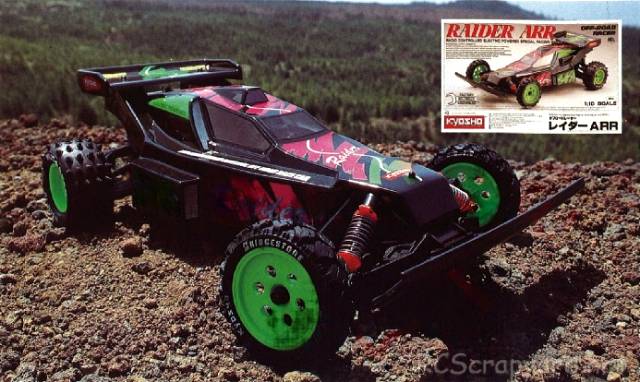
To get the best from the Kyosho Raider ARR, it needs to be fine tuned, to provide precise steering response and improve grip when cornering, so you don't slide off the track. Small changes can make huge advancements and our easy to understand guide will help you to the optimum Set-up for your individual driving style.








|
|
|

★ Kyosho Raider ARR - 3189 Box ★
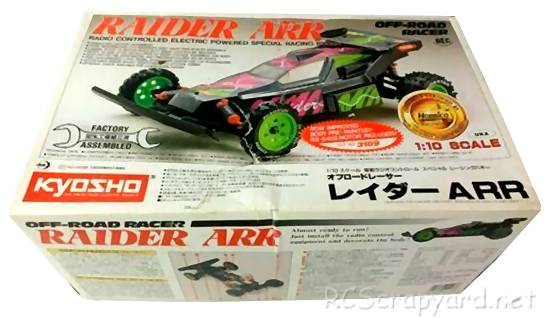
★ Kyosho Raider ARR - 3189 Box ★
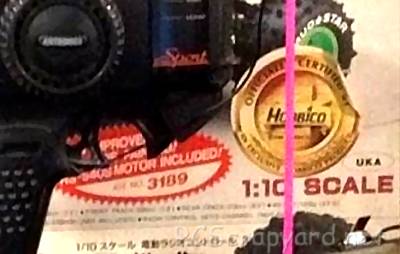
★ Kyosho Raider ARR - 3189 ★
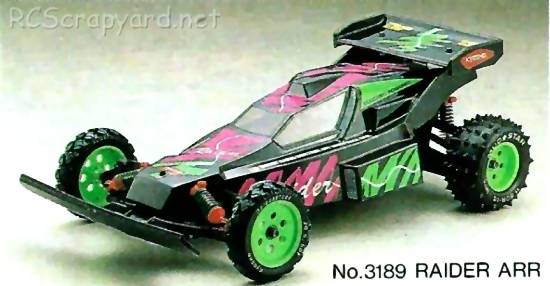
★ Kyosho Raider ARR - 3186 ★
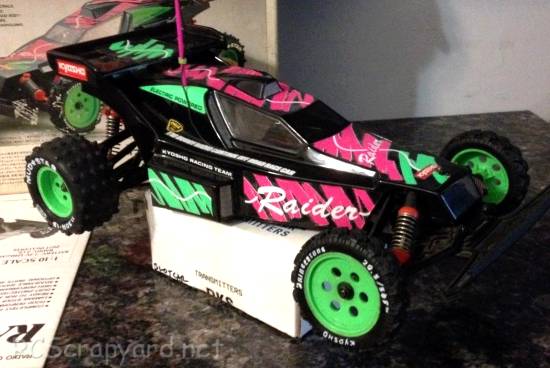
★ Kyosho Raider ARR - 3186 / 3189 Chassis ★
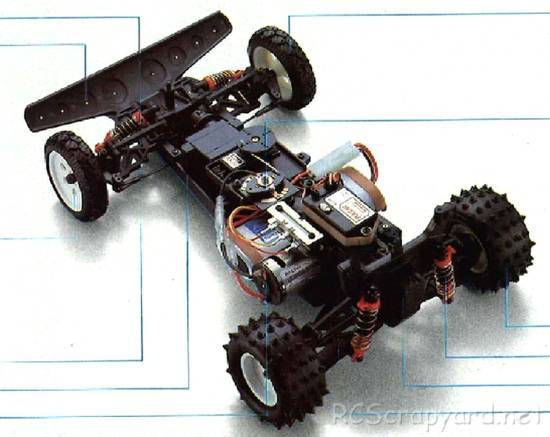
★ Kyosho Raider ARR - 3186 / 3189 Chassis ★
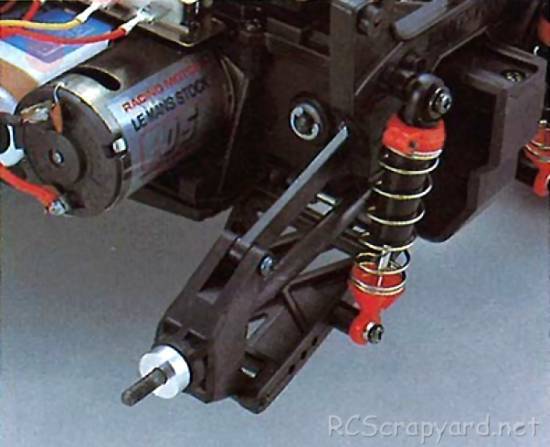
★ Kyosho Raider ARR - 3186 / 3189 Chassis ★
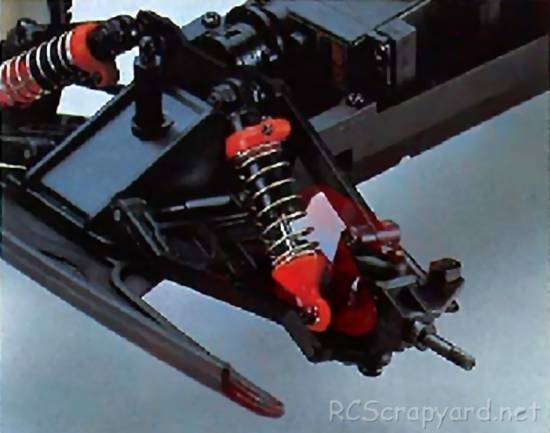
★ Kyosho Raider ARR - 3186 / 3189 Chassis ★
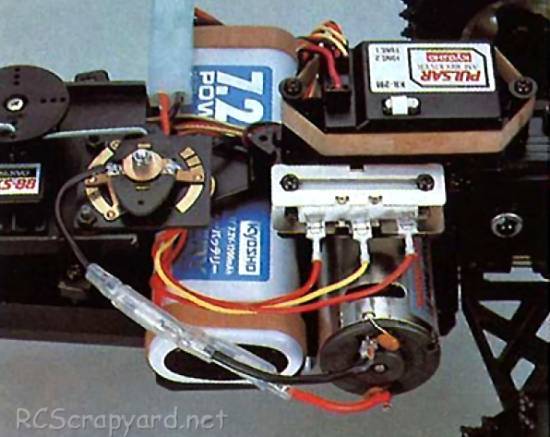
★ Kyosho Raider ARR - 3186 / 3189 Chassis ★
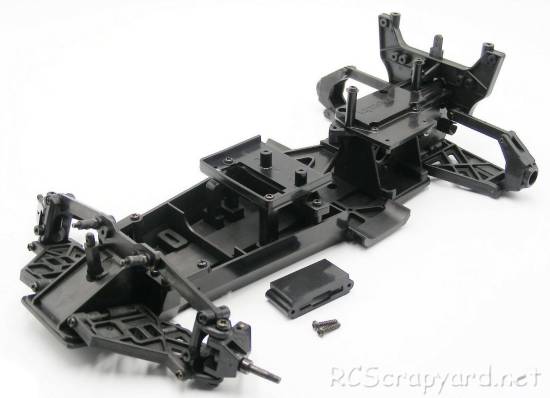
★ Kyosho Raider ARR - 3186 / 3189 Chassis ★
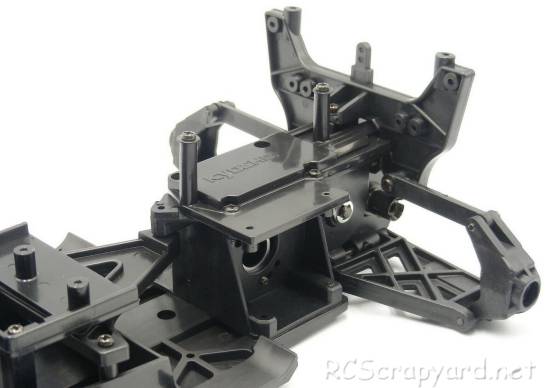
★ Kyosho Raider ARR - 3186 / 3189 Chassis ★
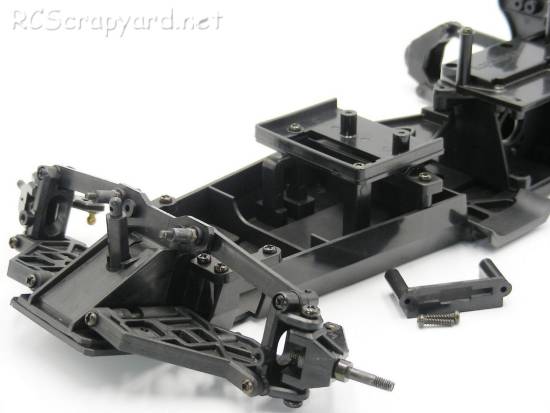
★ Kyosho Raider ARR - 3186 / 3189 Chassis ★
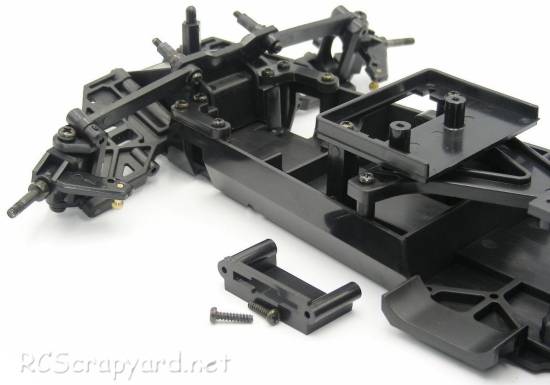
★ Kyosho Raider ARR - 3186 ★
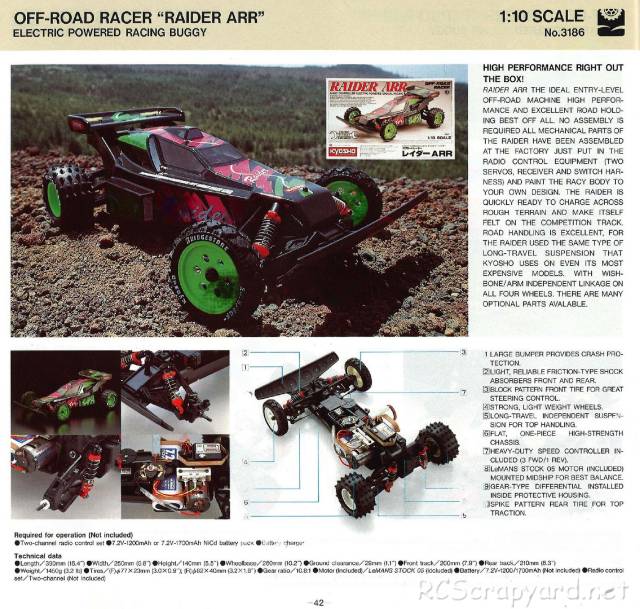
|
Buying a Used Kyosho Raider ARR
|
|
Manufacturers and Brands Catalogued, Listed and Reviewed by RC-Scrapyard.
At present, the RC Model Manufacturers, Brands and Distributors covered by us are: ABC Hobby, Academy, Acme Racing, Agama Racing, Amewi, Ansmann Racing, ARRMA, Team Associated, Atomic RC, Axial, AYK, Bolink, BSD Racing, Capricorn, Carisma, Carson, Caster Racing, Cen, Corally, Custom Works, Durango, Duratrax, ECX - Electrix, Exceed RC, FG Modellsport, FS-Racing, FTX, Fujimi, Gmade, GS-Racing, Harm, HBX, Helion, Heng Long, Himoto Racing, Hirobo, Hitari, Hobao, Hong-Nor, Hot Bodies, HPI, HSP, Intech, Integy, Jamara, JQ Products, Kawada, Kyosho, Losi, LRP, Maisto, Mardave, Marui, Maverick, MCD Racing, Megatech, Mugen, New Bright, Nichimo, Nikko, Nkok, Ofna, Pro-Pulse, Protech, PTI, RC4WD, Redcat Racing, RJ-Speed, Robitronic, Schumacher, Seben, Serpent, Smartech, Sportwerks, Step-Up, Tamiya, Team-C Racing, Team Magic, Thunder Tiger, Tomy, Top Racing, Traxxas, Trinity, Tyco, Vaterra RC, Venom, VRX Racing, WLToys, X-Factory, Xmods, Xpress, Xray, XTM, Yankee RC, Yokomo, ZD Racing and Zipzaps. |
|
Hints, Tips and Information Rechargeable Batteries
|
|
Hints, Tips and Information
Roll Center
One of the least understood settings on RC model cars is concept of roll center. The simple definition of roll center is a point in space that the chassis rolls from side to side as the car maneuvers around a corner. The Effect of Roll Center on your Car
But what does all this mean? I hear you ask. Well, it gives you some insight to what changing the position of your camber links can do to the way your car handles. |
|
RC Models:
|
Radio & Motors: |
Other
Accessories: |